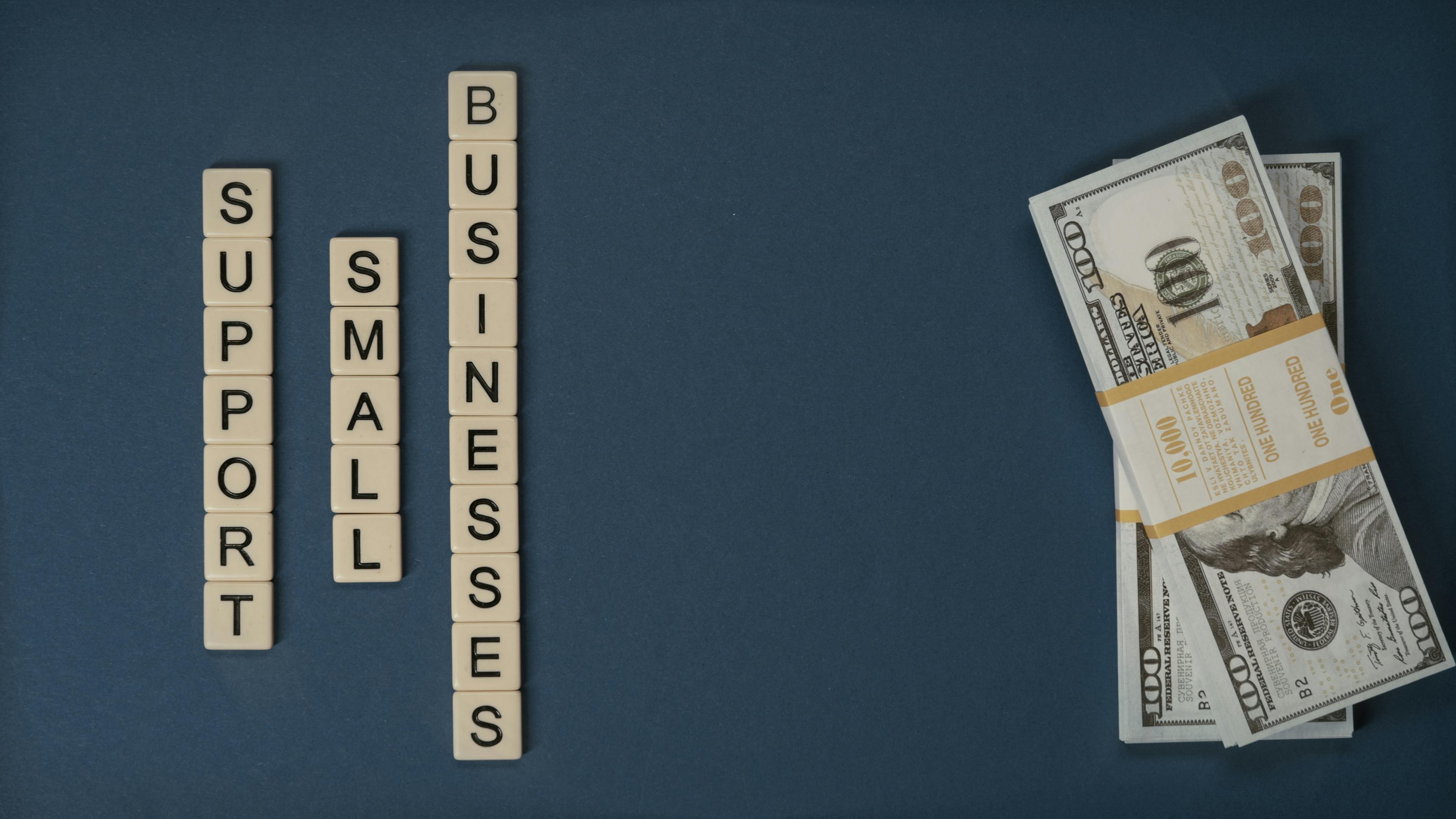How to Access Export Financing Solutions for Small Businesses in Panama
Let me start with a confession: when I got thrown into my first export project as a junior analyst in Panama City back in 2010, I thought money for international expansion just—well—magically appeared for successful businesses. The reality? Most small business owners in Panama, even today, face an exhausting uphill climb just to get the financing needed to fulfill their first international order. And that’s after they’ve survived domestic hurdles, supply chain chaos, and the overall unpredictability that defines commerce in this part of the world.
Yet, the potential rewards for breaking through that wall are enormous. According to the Inter-American Development Bank, Panamanian SMEs (small and medium-sized enterprises) that access export markets grow 20-30% faster in revenue versus those limited to local sales1. But—and this is where things get sticky—finding, securing, and using export financing is anything but straightforward, especially in a fast-changing regulatory environment that rewards the persistent and punishes the unprepared.
You don’t have to be a giant exporter to benefit from tailored trade finance tools. In fact, Panama is quietly becoming a regional leader in making export financing more accessible to small businesses, but only for those who know how to navigate the options and paperwork (which, speaking from bitter experience, is where many first-timers get stuck).
Why Export Financing Matters in Panama
Ask any small manufacturer in Colón, or an agri-processor in Chiriquí, and they’ll probably offer a simple answer: you can’t take on big orders without working capital. But let’s drill down, because the truth is even more nuanced.
The rise of the Panama Canal’s expanded capacity, plus massive port investments, has positioned the country as one of Latin America’s premier export corridors. However, “the canal doesn’t mean much unless small businesses have the financial muscle to compete for orders,” as trade economist Ana Limón noted in a 2022 conference I attended2. Exporters routinely face a mismatch—costs to source, produce, and ship come due months before overseas buyers pay up. That’s where export financing steps in.
Export financing refers to any financial tool (loans, guarantees, insurance, factoring) designed specifically to help businesses cover costs—inventory, production, logistics, and sometimes even marketing—related to international trade contracts3. Without it, most SMEs face a cash crunch that can kill a deal before the container even ships.
Biggest Barriers for Panama’s SMEs (And Why Many Give Up Too Soon)
- Complex documentation requirements that intimidate even savvy entrepreneurs
- Strict collateral demands (many small firms lack sufficient assets)
- Limited awareness of government support programs among business owners (a lot just didn’t know they exist, myself included the first time around)
- Banks’ risk aversion toward first-time exporters
- Varying regulations and limited harmonization with international trade finance best practices
Last year, I advised a Panamanian cocoa exporter whose first European order was double her annual turnover. The buyer offered a letter of credit, but her local bank wouldn’t finance against it. The entire deal nearly collapsed—until she tapped a little-known FECI-backed working capital line, approved after a rapid technical review. The lesson? Knowing which program matches your business stage is often as important as having a good product.
Panama is one of the few Latin American countries where export insurance policies are rapidly being rolled out for SMEs—not just large corporates. This shift, which started in 2018, has already supported more than 1,200 small exporters as of Q1 20244.
I used to underestimate the importance of such policies—until a client lost a major shipment due to port strikes in Hamburg and recovered 90% of his loss via insurance funded by a Panamanian scheme. It completely changed how I advise smaller clients on risk and export prep.
Types of Export Financing in Panama (and How to Use Them)
So, what are your real options if you’re running an SME in Panama? There’s a bewildering array–some more accessible than others, depending on your business history, sector, and cash flow cycle. Let’s break down what (actually) works in the field, not just on paper, with personal notes where relevant.
1. Pre-shipment Financing
Pre-shipment loans are lifelines for businesses needing cash to buy materials, process orders, or manage payroll ahead of export. Typically secured with purchase orders, confirmed contracts, or, in rare cases, movable collateral. I’ve seen these make or break deals for businesses exporting coffee, seafood, and textiles—especially when buyers insist on lengthy shipping schedules.
- Short-term bank loans backed by credit lines: Most popular, but banks usually require 1-2 years of export history.
- FECI-backed lines: The Fondo Especial de Compensación de Intereses (FECI) subsidizes loan interest for qualifying SMEs exporting in priority sectors.
- Supplier credit through local and multinational value chains: Can be useful, but watch for high implicit costs.
Even if your bank says “no” at first, come prepared with export contracts, historic sales, and details about your foreign buyers. Persistence and relationship-building count for more than you think—a senior banker once reversed a “no” for a client of mine after three targeted follow-ups and proof that the buyer was a multinational with near-zero credit risk.
2. Post-shipment Financing
This covers the period after goods leave your warehouse but before buyers pay up (which, depending on market, is often 60-120 days). Options include:
- Export factoring: You sell your receivables at a discount, get most of the cash up front. Growing fast in Panama since 2017, but rates vary widely.
- Discounting of export bills: Your bank advances a % of the invoice’s value, to be settled when the buyer pays.
- Government-backed insurance: If the buyer defaults, you’re protected (more on this in the next section).
Over 35% of invoice factoring in Panama in 2023 involved deals under $50,000, making these tools accessible for micro-enterprises, not just huge exporters5.
3. Export Insurance and Guarantees
This is where too many SMEs fall short—often perceiving insurance as an unnecessary cost. In reality, export credit insurance is the only reason some local banks even consider your application. The government’s Export Credit Agency (ASEP) launched simplified SME coverage in 2019, filling a critical gap for businesses with thin capital buffers6.
- Covers non-payment/default risks for up to 95% of the invoice value
- Accepted by most major Panamanian lenders as substitute for hard collateral
- Quick claim process—usually resolved within 60 days after documented buyer default
I once guided an agro-exporter through this process after a buyer in Spain went bust. The insurance payout didn’t erase the emotional disaster, but it kept the business alive, and the owner later called it “the best investment I ever resented making.” Learn from that humility—a little skepticism toward new insurance products is healthy, but don’t let it paralyze your decision-making.
Comparison Table: Popular Export Financing Vehicles (Panama 2024)
| Financing Type | Best For | Key Requirements | Approval Speed |
|---|---|---|---|
| Pre-shipment Loan | Established SMEs, manufacturing, agri-business | 2+ years operation, export orders, financial statements | 2–6 weeks |
| Export Factoring | SMEs with diverse buyers, repeat contracts | Verified invoices, buyer vetting | 1–3 weeks |
| Export Credit Insurance | New exporters, high-risk markets | Buyer analysis, contract review | 3–5 weeks |
Who Can Apply, and What Steps Matter Most?
I’ve helped dozens of hopeful business owners prepare finance packages, and nearly all stumbled over the same hurdles. So, what actually moves the needle for Panamanian lenders and agencies?
- Solid export contract(s) or confirmed purchase orders
- Business registration in Panama and up-to-date tax filings
- Clear track record: sales history (ideally 12–24 months, flexible in some programs)
- Financial statements (basic but accurate; some fintech lenders even accept digital accounting exports now)
- Documentation of buyer creditworthiness (letters of credit, trade references, insurance certificates)
Never underestimate the importance of documenting your buyer’s reliability. I’ve seen a “contract” on WhatsApp derail a $100,000 credit line application—Panamanian banks want formal invoices or signed POs, not chat screenshots. If in doubt, formalize it before you ask for financing.

Success Stories and Real-World Realities: What Actually Works (and Fails)
I’ll be blunt: for every “overnight export success,” there are at least twenty stories of deals that fell apart due to cash crunches or financing missteps. I’ve been in the room for both. Let’s take a closer look at what separates the SMEs that break through—versus those that slip through the cracks—using real examples and lessons learned (sometimes the hard way).
In 2021, a Panamanian fashion accessories SME scored a significant deal with two U.S. buyers at a trade show. Their challenge? A production cycle that required them to front costs for raw materials and labor. After three banks rejected them for lack of collateral, they pivoted: applying for government-backed factoring, and onboarding an export insurance policy for the first time.
The combination (plus some relentless phone calls, as the founder later admitted) led to approval in under a month—and timely delivery of over $80,000 in orders by the holiday shopping season. Their future international orders now routinely use these tools, and they’ve doubled sales in just two years.7
I still think back to a client in the seafood sector who—despite strong U.S. demand—lost business because she assumed a “verbal commitment” was good enough for the bank. As expected, her credit application stalled, her U.S. buyer moved on, and she lost six months of growth momentum. The kicker? She later secured export credit insurance, but only after several costly missteps.
Moral of the story: document everything, and never rely on informal assurances—even if it’s a trusted customer. It’s the fastest way to undermine your own credibility (ask me how I learned this the hard way, more than once).
Current Trends: How the Export Finance Scene Is Changing in Panama (2024 Onwards)
If you haven’t checked the headlines lately, you might think exporting finance is a “legacy” process—paperwork, slow banks, limited fintech. But there’s a mini-revolution underway. Several government-backed initiatives are rapidly expanding, especially for SMEs in priority sectors like agri-business, creative industries, and manufacturing.8
- ASEP’s digital portals now allow online application tracking and faster eligibility checks
- Fintech platforms partner with Panamanian banks for faster pre-shipment financing reviews
- Regular training workshops for SMEs new to exporting—often overlooked but extremely worthwhile
Here’s the thing though: the rules, risk appetites, and documentation requirements continue to change. If you only rely on forum gossip or outdated guides, you risk missing out on easier, cheaper, or faster funding sources. My recommendation? Stay in touch with chamber of commerce export advisors or reputable trade consultants. They can flag pilot programs or sector incentives ahead of broader PR announcements.
Comparison: Export Financing Access in Panama vs. Other LATAM Markets
How does Panama really stack up? There’s no sugarcoating it: access here is better than in some neighboring countries (Nicaragua, Honduras), but still trails the giants (Brazil, Chile, Mexico) when it comes to depth and diversity of financial products. However, Panama’s recent regulatory reforms have made rapid strides, especially for SMEs.
| Country | SME Export Finance Penetration (2023) | Average Loan Processing Time | Major Barriers |
|---|---|---|---|
| Panama | 19% | 2.5 weeks | Collateral, awareness |
| Costa Rica | 21% | 3.5 weeks | Collateral, FX risk |
| Colombia | 31% | 2 weeks | Paperwork, bank risk appetite |
| Brazil | 38% | 3.1 weeks | Regulatory complexity |
It’s also worth mentioning that while Panama’s data is trending positive, the real challenge lies in making more SMEs aware that these programs even exist—a recurring theme among business development officers and trade chamber sessions I’ve attended over the past three years.9
- Is my buyer relationship well-documented and credible by local lender standards?
- Do I understand the true costs (including insurance, factoring discount rates, admin fees) of the financing vehicle I’m considering?
- Is my business ready to scale, operationally and financially, for the demands of export?
FAQs & Key Takeaways: Navigating Panama’s Export Financing Landscape
Frequently Asked Questions
- How long does it really take to get export financing as a Panamanian SME? — Typically, banks take 2-6 weeks (application to disbursement), though fintech partners can sometimes cut this to 7-10 days for smaller requests.10
- Is collateral always required? — Not always. Export credit insurance or factoring can sometimes substitute, but be prepared for tighter scrutiny on your contracts and buyer reliability.11
- Which sectors get priority? — Agri-business, creative industries, tech, and green manufacturing are currently prioritized by most government and multilateral programs.
- Are there hidden costs? — Application and processing fees are often under-advertised; always request a written fee schedule and simulate cash flows under different scenarios before signing.
- What about USD vs. other currencies? — Nearly all Panamanian export finance (as of 2024) is USD-denominated, which simplifies FX risk for many export markets.12
Key Takeaways (Backed by Real-World Experience)
- Panama’s export finance is rapidly evolving, with new digital tools and government-backed products every year.
- Success goes to the persistent—not just the prepared. Who you know, and how well you document relationships, counts.
- Prepare perfect paperwork, but don’t panic if you hit a wall; alternatives like factoring and insurance are gaining ground.
- Awareness is half the battle: stay updated by joining trade chamber briefings and export-focused webinars.
Ready to take your Panamanian business global? Reach out to your bank, industry chamber, or a trade advisor to explore which export financing options best fit your current growth stage. The paperwork might be daunting, but the right support—and a bit of relentless follow-through—make all the difference. Share your experience and join Panama’s growing network of successful exporters.
References



